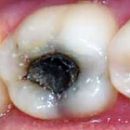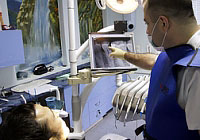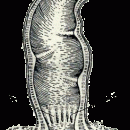Interest in prosthetics of teeth does not appear just so. What is a bridge prosthetic? What is good in it and that bad? How to put this prosthesis?
Content
About bridge prosthesis
The bridge prosthesis is a non-removable orthopedic design, which resembles a bridge that is attached to the teeth with a crown.
Most-shaped prosthesis is the most traditional method for restoring the lack of teeth.
It is used to replace one or more missing teeth. Installing a bridge prosthesis is possible only if the right or left on both sides of the empty gap still have teeth to which it can be fixed. These support teeth are scolded, and crowns are installed on them. An element of a prosthesis is installed on the crowns, replacing the missing tooth.
Pluses of bridge prosthesis
- Great aesthetic species
- More comfortable than removable prostheses
- The fastest addiction
- This is usually metal-ceramic structures
Minuses of bridges prosthesis
- Need to catch the neighboring teeth
- The support teeth over time can be spoiled and disturbed due to the load when a lot of teeth are replaced (the gap between the solid teeth is large)
- From the consideration of bone conservation, the use of bridges is limited. The fact is that after the removal of the tooth, the bone that kept the tooth remains without load, t.E. Do not function. This leads to her resorption and atrophy.
Therefore, from these considerations, preference is given to implants, t.To. The implant operates itself and allows you to function the holding of its bone.
They are more expensive than removable prostheses.
What is a Merdiland one bridge prosthesis
The Meriland Bridge replaces the missing tooth by attaching to the paternal surface of the adjacent two teeth of the metal leg. For the manufacture of the Merilandord Bridge, you need a smaller breaker (sniff) of adjacent teeth solely from the inner surface of the teeth.
Pros and Cons Prosthesis
- Applied in cases if neighboring healthy teeth.
- He is ideal as temporary restoration.
- He is short-lived, t.To. Metal legs can separate (turn out) from teeth due to heavy load.
- In essentially used on the rear teeth. It is used exclusively on the front teeth.
How made a bridge prosthetic
The process of making a bridge prosthesis needs to go to the doctor from three to four times.
First visit
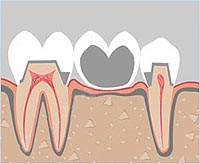 Alestruction
Before proceeding with the preparation of supporting teeth under the crown, the doctor will make any anesthesia to anesthety, not only the teeth, but also surround their soft fabrics, t.E. Desna.
Alestruction
Before proceeding with the preparation of supporting teeth under the crown, the doctor will make any anesthesia to anesthety, not only the teeth, but also surround their soft fabrics, t.E. Desna.
Prepact of support teeth
For the manufacture of the bridge you need to turn over two neighboring teeth. The thickness of the metal ceramic crown is 1.4-1.7 mm. Therefore, before putting crowns on the support teeth, it is necessary to reduce the size of the teeth, covered them from all sides to the thickness of the crowns. Crawling teeth under the crown, the doctor seeks not only a decrease in size, but to give teeth to a certain form. In addition to giving a special form in the subsidence of the tooth, ledges are made.
Removing casts on both jaws
In order to make a bridge, which would be exactly suitable for your teeth, the doctor will remove the cast not only with the activated teeth, but also from the opposite jaw, in order to be able to simplify the future bridge, considering the teeth-antagonists. Next, the cast is sent to the dental laboratory, where the gypsum model is cast on it, which is an exact copy of your teeth. It is on this model that a bridge prosthesis is made.
Select the color of the future bridge
If the bridge is a metal-ceramic, it is necessary that it does not differ in color from natural neighboring teeth. For this, the doctor on a special color of the colors will determine the color of your teeth, with which the color of your future bridge will be selected.
Production of a temporary bridge
The temporary bridge is manufactured for that period until the permanent. The temporary bridge is needed to protect the support teeth from different stimuli (for example, temperature, if the teeth are alive) and to restore aesthetic species, especially, this is relevant if the teeth are front. The temporary bridge is usually made from plastics, and his doctor himself makes it, or in a dental laboratory, depending on the specific clinical situation. The temporary bridge is fixed on the teeth with the help of temporary cement, so that it can be easily removed during the next visit to the dentist.
Second Visit - Verification Protestation
If the bridge is metal ceramics, then in the laboratory, first make a metal base of the bridge - metal frame. In the clinic in your next (second) visit, this frame is trying on the teeth, and, making sure that he corresponds exactly to them, go to the dental laboratory again, now to cover it with a special ceramic mass, at the expense of which the teeth will look under the color of natural teeth.
Third visit - put the bridge
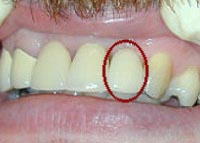 After the doctor is once again convinced that the crowns are perfectly sitting on the teeth, t.E. they are tightly wrapped, do not interfere with the closure of the teeth, check their shape and color, it will definitely demonstrate you the final result of my work and finds out your opinion on this.
After the doctor is once again convinced that the crowns are perfectly sitting on the teeth, t.E. they are tightly wrapped, do not interfere with the closure of the teeth, check their shape and color, it will definitely demonstrate you the final result of my work and finds out your opinion on this.
After your positive assessment, the doctor will start the final stage of his work - to fixing the bridge on the teeth. Crowns are fixed with special cement. Cement is distributed inside the crowns, and the bridge is put on the teeth. Cement surplus are removed by a special tool.
This option is possible that the doctor finds it necessary to fix the bridge first for temporary cement, while it will surely comment on this necessity. After a certain period, the temporary cement doctor will replace the permanent, only after that the work can be considered completed.

